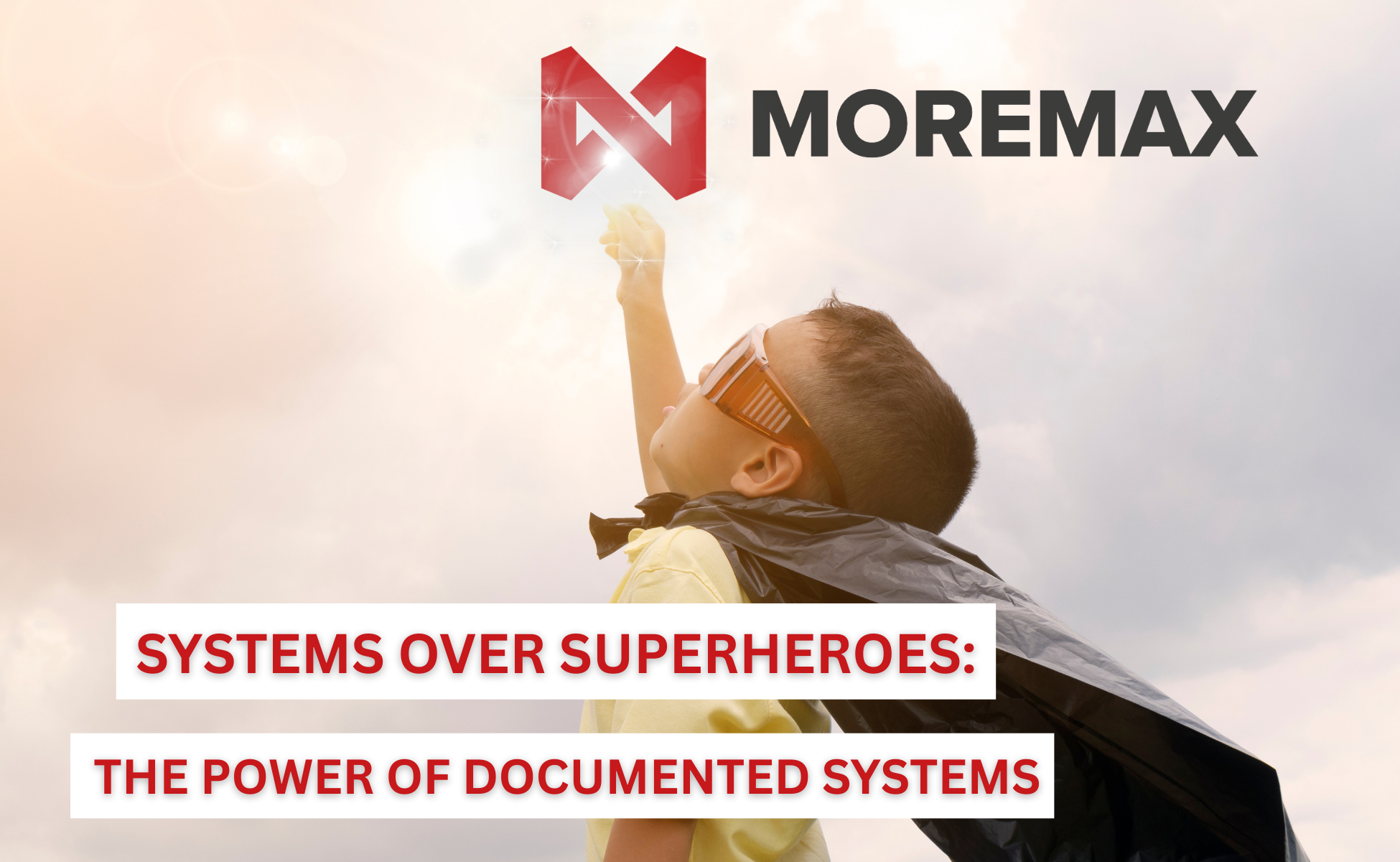
Grow Your Law Firm: Systems Over Superheroes
In the fast-paced world of legal practice, where deadlines loom and client expectations run high, many law firms fall into the trap of depending on “superhero” employees to keep things running. But what happens when your rockstar associate burns out or moves on? The answer lies in building robust, documented systems that turn chaos into consistency. For law firms, solo practitioners, and immigration lawyers, embracing law firm automation and workflow optimization isn’t just a luxury, it’s a necessity for sustainable growth. This article explores how shifting from heroics to systems can transform your practice, drive efficiency, and position you for long-term success.
Why Relying on “Rockstar Employees” Puts Your Law Firm at Risk
Every law firm has that one indispensable team member—the attorney who remembers every case detail, the paralegal who juggles multiple deadlines without breaking a sweat, or the admin who intuitively knows how to handle client crises. These “superheroes” often become the backbone of operations, but this reliance creates hidden vulnerabilities.
First, consider the human factor. Burnout is rampant in the legal industry, with studies showing that over 60% of lawyers experience high levels of stress. When your superhero falters, the entire firm feels the impact: missed deadlines, client dissatisfaction, and potential malpractice risks. Solo practitioners, in particular, face this acutely, as they often wear multiple hats without a safety net.
Moreover, scalability suffers. As your firm grows—whether adding associates or expanding into new practice areas like immigration law—depending on individual brilliance doesn’t scale. What works for a team of five won’t hold up for 50. Immigration lawyers, dealing with ever-changing regulations from USCIS and complex case timelines, can’t afford inconsistencies that arise from ad-hoc processes.
The real risk? Knowledge silos. When processes live in someone’s head, they’re not transferable. If a key employee leaves, they take that institutional knowledge with them, leading to costly disruptions. Systems vs. superheroes: the former builds resilience, while the latter breeds fragility. By documenting workflows, you mitigate these risks and create a foundation for predictable performance.
The Power of Documented Systems in a Legal Practice
Documented systems are the unsung heroes of high-performing law firms. They transform tacit knowledge into explicit, repeatable processes that anyone can follow. Think of them as the blueprint for your firm’s operations—ensuring consistency, reducing errors, and freeing up time for high-value work like client strategy and business development.
For law firms, this means codifying everything from client consultations to court filings. Legal tech solutions play a pivotal role here, integrating tools like case management software to automate routine tasks. The result? Enhanced compliance, better team collaboration, and improved client outcomes.
Take a mid-sized firm handling personal injury cases: Without systems, each attorney might approach discovery differently, leading to inefficiencies. With documented processes, everyone follows the same checklist, ensuring nothing slips through the cracks. This not only boosts productivity but also enhances your firm’s reputation for reliability—a key differentiator in a competitive market.
Systems also empower delegation. Solo practitioners can outsource non-core tasks confidently, knowing that documented guidelines maintain quality. In essence, documented systems democratize excellence, making your firm less dependent on individual talent and more reliant on structured efficiency.
How Scalable Processes Drive Growth for Solo and Small Firms
For solo practitioners and small firms, growth often feels like an uphill battle. Limited resources mean every hour counts, and scaling without systems can lead to overwhelm. However, implementing scalable processes changes the game.
Start with the basics: A documented client intake system can reduce administrative time by 30-50%, allowing you to onboard more clients without hiring additional staff. Tools like automated forms and CRM integrations streamline this, turning leads into revenue faster.
Growth isn’t just about volume; it’s about sustainability. Scalable processes enable you to handle increased caseloads without proportional increases in overhead. For instance, a small immigration law firm might use workflow templates for visa applications, ensuring compliance with evolving policies while minimizing rework.
Data backs this up: Firms with strong processes report 20-40% higher profitability, as they minimize billable hour leaks from inefficiencies. Systems vs. superheroes allows solo and small firms to punch above their weight, competing with larger players through agility and precision. Ultimately, these processes foster a culture of continuous improvement, positioning your practice for organic expansion or even mergers.
Immigration Lawyers: Why Systems Matter More Than Staff Size
Immigration law is a field defined by complexity—navigating forms like I-485 adjustments, H-1B visas, and asylum claims amid frequent policy shifts. For immigration lawyers, whether in solo practice or larger firms, systems aren’t optional; they’re essential for survival.
Staff size often limits smaller operations, but documented processes level the playing field. A well-systemed firm can manage high-volume cases efficiently, using checklists for evidence gathering and timelines for USCIS submissions. This reduces errors that could lead to denials or appeals, saving time and client trust.
Consider the regulatory landscape: Changes like the 2024 USCIS fee hikes demand adaptability. Systems integrated with law firm automation tools can flag updates automatically, ensuring compliance without constant manual checks. For immigration lawyers, this means focusing on advocacy rather than administration.
Moreover, systems enhance client communication, a pain point in immigration cases where delays are common. Automated status updates build transparency and loyalty. In a niche where referrals drive business, reliable processes translate to repeat clients and positive reviews. Systems vs. superheroes: In immigration law, the former ensures precision in a high-stakes environment, regardless of team size.
5 Key Areas of Your Firm That Need Documented Workflows
To build a scalable firm, prioritize documenting workflows in critical areas. Here’s a breakdown:
👉 Client Intake and Onboarding
A streamlined intake process sets the tone for client relationships. Document steps like initial consultations, conflict checks, and retainer agreements. Use workflow optimization tools to automate forms and scheduling, reducing no-shows and accelerating onboarding.
👉 Case Management and Deadlines
Missed deadlines can be catastrophic. Create documented calendars with alerts for filings, depositions, and hearings. For immigration lawyers, include USCIS-specific timelines. This ensures nothing falls through, even during staff transitions.
👉 Billing and Collections
Inconsistent billing erodes profits. Document hourly tracking, invoice generation, and follow-up protocols. Integrate with accounting software for automated reminders, improving cash flow and reducing write-offs.
👉 Document Management and Compliance
Legal documents are your firm’s lifeblood. Establish systems for versioning, storage, and access controls. Compliance checklists for GDPR or HIPAA (relevant for some immigration health-related cases) prevent breaches and audits.
👉 Communication Protocols
Define channels for internal and client communications—email templates, meeting agendas, and escalation paths. This fosters clarity and professionalism, especially in remote or hybrid setups.
By documenting these areas, you create a roadmap for efficiency, adaptable to your firm’s size and specialty.
Technology + Systems = Predictable Results
Technology amplifies the power of documented systems, turning good processes into great ones. Legal tech solutions like Clio or PracticePanther integrate seamlessly, automating workflows and providing analytics for optimization.
For example, AI-driven tools can predict case outcomes based on historical data, while cloud storage ensures secure, anytime access. In law firms, this combo yields predictable results: Faster case resolutions, higher client satisfaction, and data-driven decisions.
Immigration lawyers benefit from specialized tech, like docket management for EOIR hearings. The key? Start small—pilot one tool in a documented process, measure ROI, and scale. Systems vs. superheroes, enhanced by tech, delivers consistency that clients notice and competitors envy.
How to Start Building Scalable Systems in Your Practice
Ready to shift? Begin with an audit: Map current workflows, identify bottlenecks, and prioritize high-impact areas. Involve your team for buy-in.

Next, document simply—use tools like Google Docs or Notion for checklists and flowcharts. Test and iterate based on feedback.
For tech integration, consult experts. Training is crucial; ensure everyone understands the systems.
Measure success through KPIs like billable hours recovered or error rates reduced. Remember, building systems is iterative—start today for tomorrow’s growth.
MoreMax: Your Technology Success Partner for Law Firms
At MoreMax, we specialize in helping law firms, solo practitioners, and immigration lawyers build scalable systems through tailored law firm automation and workflow optimization. Our experts design custom tech solutions that integrate seamlessly, turning your practice into a well-oiled machine.
Whether you’re a solo immigration attorney streamlining visa processes or a growing firm optimizing case management, MoreMax delivers results. Contact us today for a free consultation and discover how systems can supercharge your success—without relying on superheroes.
Ready to scale? Visit MoreMax.com or email hello@moremax.com to get started.


